The Brotherhood Alliance, a tripartite ethnic alliance comprising the Arakan Army (AA) from Rakhine State, the Ta’ang National Liberation Army (TNLA) and the Myanmar National Democratic Alliance Army (MNDAA), last Friday kicked off the anti-regime Operation 1027, named for its launch date, Oct. 27.
The group has been conducting the operation across northern Shan and Kachin states, and upper Sagaing and Mandalay regions, successfully attacking and seizing around 90 junta bases and some strategic towns in the first five days of the operation.
Many other resistance organizations, including People’s Defense Force groups (PDFs) under the civilian National Unity Government (NUG) and the powerful ethnic armed revolutionary group the Kachin Independence Army (KIA), are coordinating with the operation.
Below, The Irrawaddy highlights seven significant facts about the operation.
Large and well-organized
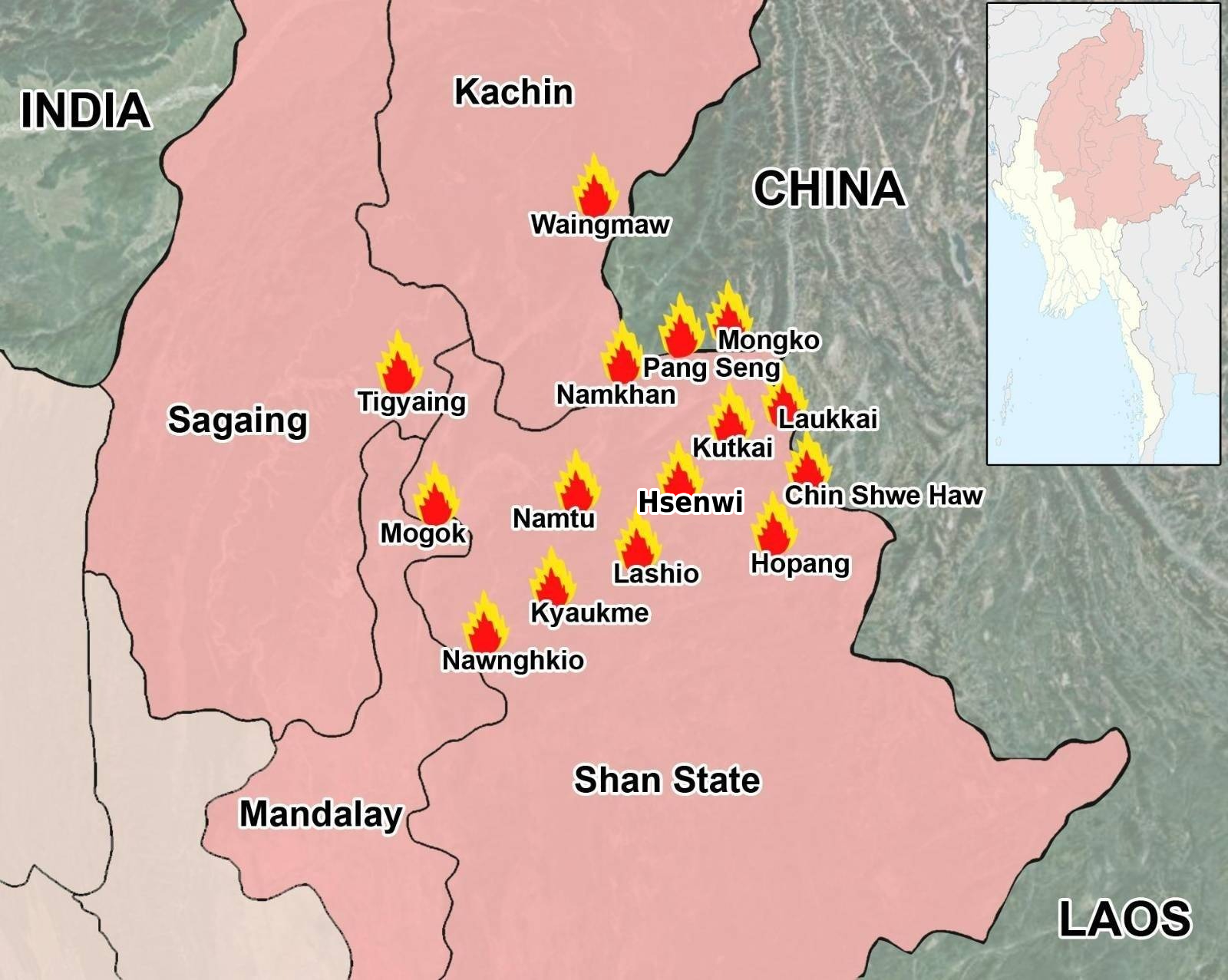
Operation 1027 is the biggest, best-organized offensive mounted against the military regime since the 2021 coup.
Some analysts have estimated that around 20,000 resistance fighters are involved in the operation, which is being conducted over a large swathe of territory across northern Shan State and neighboring Kachin State as well as the upper parts of Sagaing and Mandalay regions.
Clear political aims
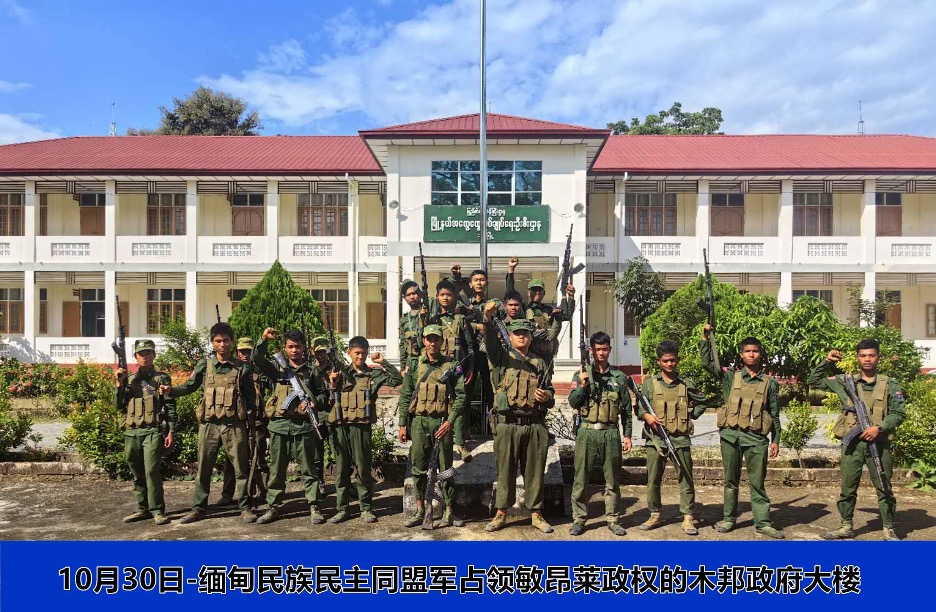
The Brotherhood Alliance has announced that the goals of the operation are to root out the military dictatorship, fulfill the wishes of the people of the country and protect them from the junta’s daily arbitrary killings.
It also aims to stop the military regime from attacking ethnic armed organizations with heavy weapons and air strikes, and to build a federal democratic union with authentically self-administrative regions.
Broad-based support
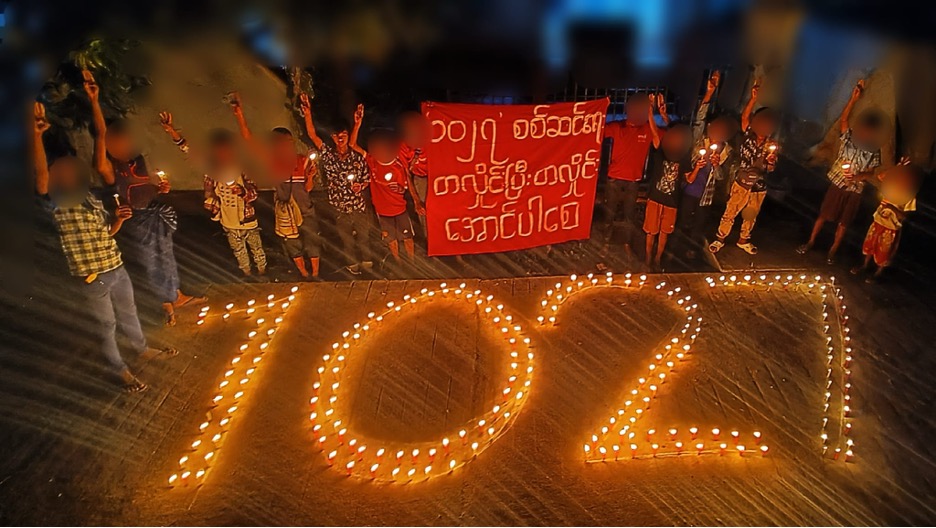
The operation’s success in attacking and seizing a large number of regime bases has won it popular support in the country, whose people are suffering great hardships due to the military regime.
Many anti-regime revolutionary groups including ethnic armed groups and the National Unity Government (NUG) have also expressed their support for the operation, sending congratulatory messages on achieving so many successes in such a short period of time.
Since the launch of the operation, some resistance groups have launched their own anti-regime operations and attacks on regime forces in other parts of the country to show solidarity with the alliance. Meanwhile, many people across the country, including in Yangon, have held anti-regime protests expressing their support for the operation.
Nearly 90 junta bases seized in five days
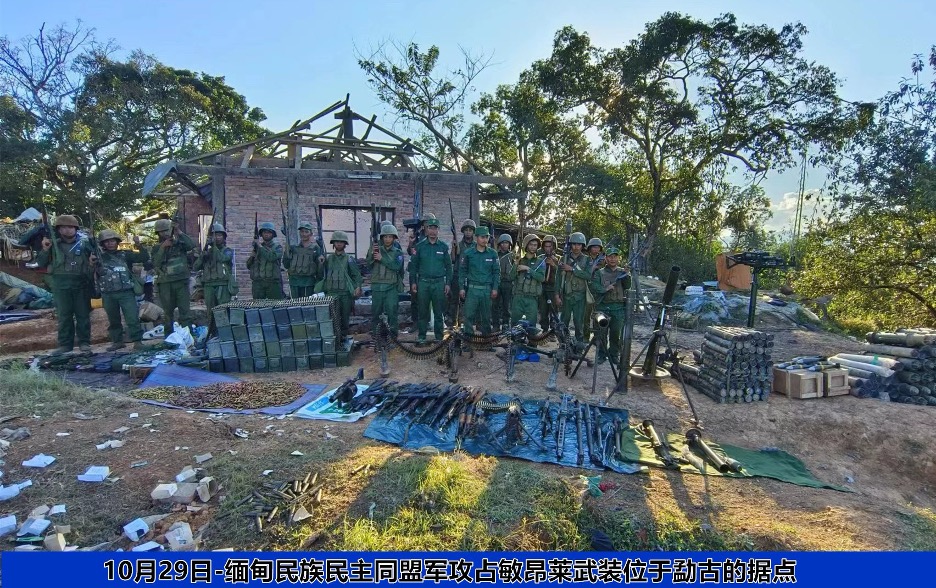
In the first five days of the operation, the Brotherhood Alliance and allied resistance groups managed to seize nearly 90 junta outposts including strategic bases across northern Shan State and Kachin State.
More than 100 soldiers were killed and many injured and arrested along with large hauls of weapons and ammunition, including up to six tanks and armored vehicles.
An estimated 60 more troops including a battalion of 41 soldiers surrendered their weapons and bases to the ethnic alliance.
The junta has not yet been able to send reinforcements or retake its bases in the targeted areas.
Seizing territory in northern Shan
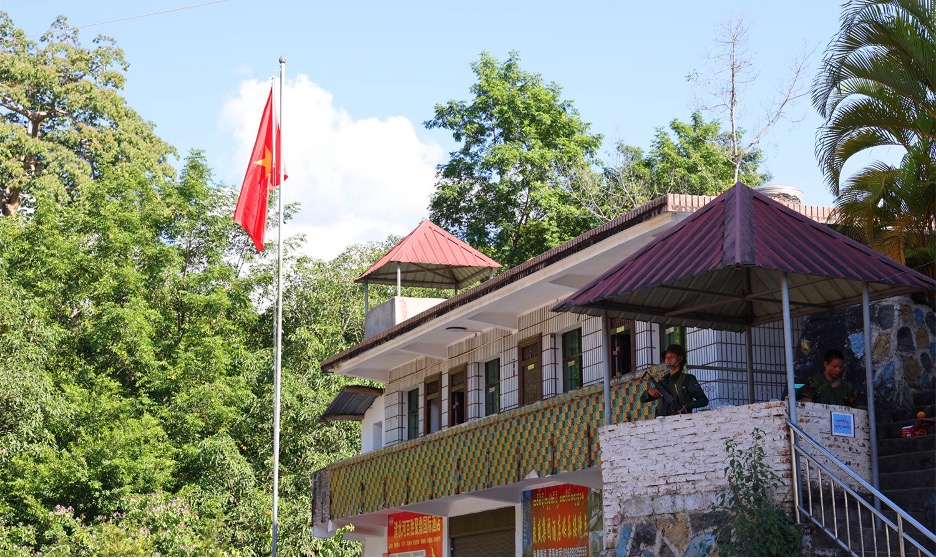
The tripartite alliance group announced it has taken complete control of Phaung Sai town in Muse Township as well as the town of Chin Shwe Haw, a key hub for border trade with China.
Additionally, the MNDAA has occupied the township police station and regime General Administrative Department office in Hsenwi, and is now trying to seize full control of the town, which has strategic importance to the junta as it situated on a key Myanmar-China trade route in northern Shan State.
Two key border trade routes—the Lashio-Muse and Lashio-Chin Shwe Haw roads—converge at Hsenwi. Since the start of the operation, the Brotherhood Alliance has blocked these roads to stop military reinforcements using them.
Meanwhile, resistance forces are trying to seize junta bases near Lashio, the capital of northern Shan State, where the regime’s Northeast Command is based.
The TNLA and Mandalay PDF have also surrounded Nawngkhio town on the Mandalay-Lashio-Muse Highway. This effectively cuts junta forces off from entering northern Shan, meaning the military will only be able to reinforce its troops by air.
Junta suffers heavy loss of income from China trade
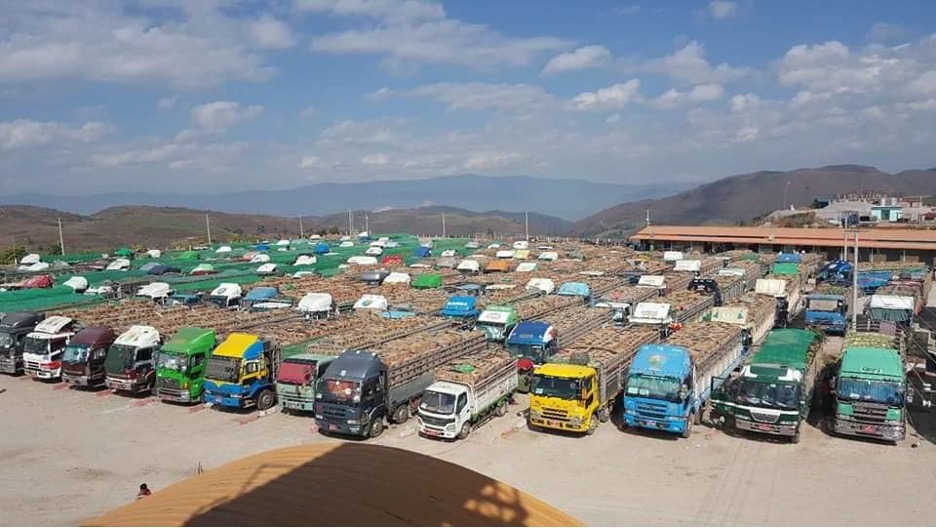
The blocking of the main trade routes has halted the flow of trade between Myanmar and China. With the MNDAA having seized Chin Shwe Haw, many regime government employees now don’t dare go to the trade zone where they work in another border trade town, Muse.
Up to 80 percent of the country’s exports are transported to China via the trade routes in northern Shan. Some analysts said Operation 1027 will cause the junta heavy losses of foreign income as tax revenues from Myanmar-China trade flows are equal to 80 percent of the junta’s daily expenses.
Countering cyber scams to please China
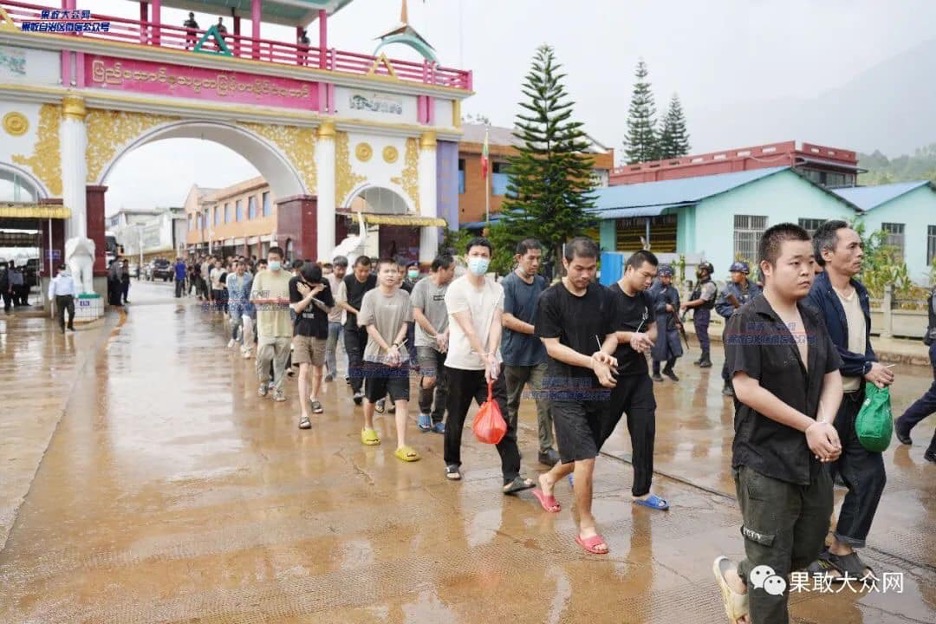
The Brotherhood Alliance has announced that another aim of its operation is to eradicate cyber scam syndicates in the Kokang region, also known as Shan State Special Region 1, which are mainly operated by the military regime and allied militia groups.
Chin has frequently expressed its eagerness to see action taken against the online scam operations, saying they seriously harm Chinese interests.
This year, China has pressured the junta as well as the ethnic armed groups on the border to eradicate the cyber scam operations.
The MNDAA recently told The Irrawaddy it had transferred people suspected of running cyber scam operations in Chin Shaw Haw to the appropriate department after seizing the town.

















